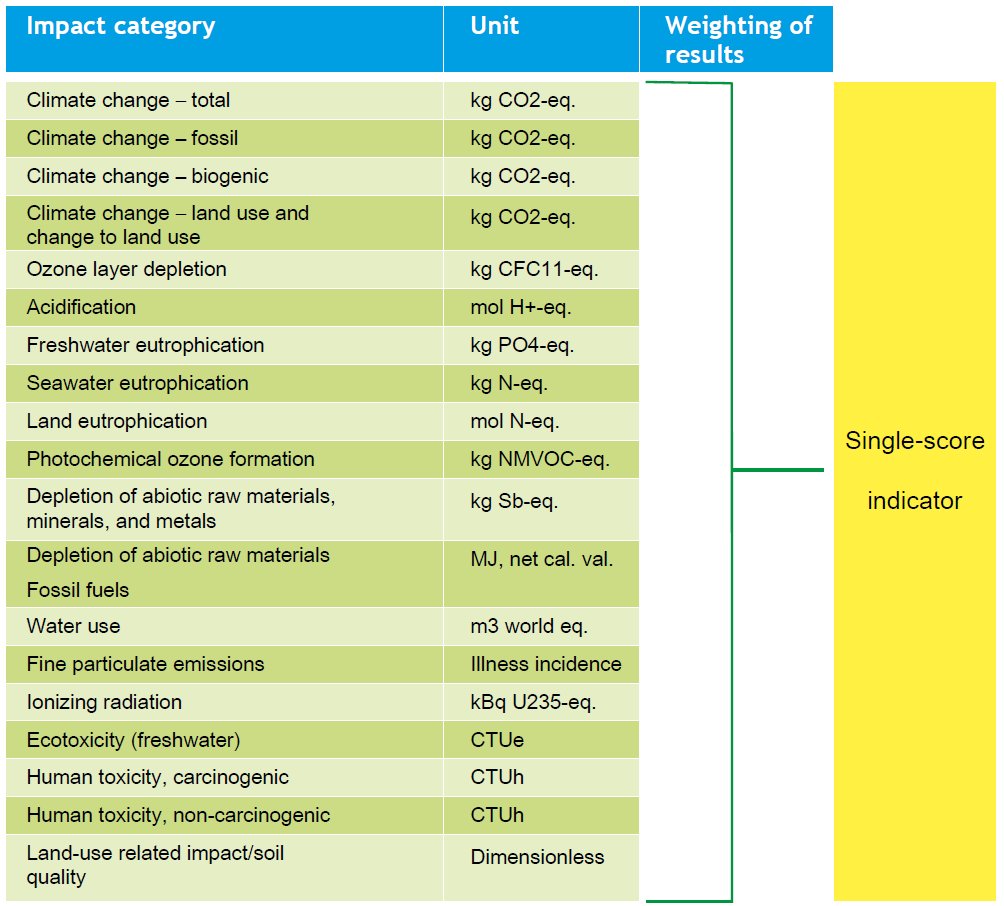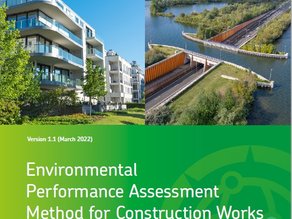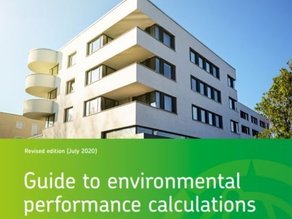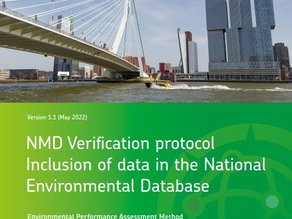An introduction to the NMD
An introduction to the Dutch system of environmental performance of construction works

The Assessment Method
In The Netherlands, The Environmental Performance Assessment Method for Construction Works, or Assessment Method, is a uniform method to calculate the environmental performance of structures in an unambiguous, verifiable and reproducible way. This Assessment Method is based on the European norm EN 15804, which is the basis for drafting Environmental Product Declarations (EPD’s). An EPD is a standardized document that declares the environmental impact of the products life cycle. The environmental impact is divided into different environmental impact categories, for example Global Warming Potential, and is calculated by means of a Life Cycle Analysis (LCA).
An LCA is performed by a specialized LCA-company. The results (the environmental impacts per category) and underlying report of this LCA are first verified by an independent third party, after which the data will be submitted to The Dutch Environmental Database (de Nationale Milieudatabase). As can be seen in de figure, the described sequence of steps applies to two types of product information (category 1 and 2):

Category 1
Brand-specific data. This means that the data is supplied and owned by a manufacturer/producer. After application, the data is first validated according to the Assessment Method by the Dutch Environmental Database. Subsequently, the data gets published in the database.
Category 2
Unbranded data. This data represents for example a Dutch market or a group of manufacturers, and is supplied and owned by a group of manufacturers/suppliers or a branch of industry. After application, the data is first validated according to the Assessment Method by the Dutch Environmental Database. Subsequently, the data gets published in the database.
Category 3
Unbranded data drafted by LCA-experts under the responsibility of the Dutch Environmental Database. It provides environmental data of a construction product in the absence of, and as a counterpart to, category 1 and category 2 data.
With the data stored in the Dutch Environmental Database, the environmental performance of a building or an infrastructure project can be calculated, using special Calculation Tools. These tools are commercial software, developed by companies, that are verified and licensed by the Dutch Environmental Database to be used for this purpose.
The Single-Score Indicator of Environmental Performance
The environmental performance is calculated by multiplying the results of the LCA (the environmental impacts per category) with weighting factors. These weighting factors are determined on a member state level. Together, this creates an aggregated value for the environmental performance of a construction product. In order to be able to compare the environmental impact of new houses and office buildings, the environmental performance is converted into a comparable unit by dividing the value through the Gross Floor Area (GFA) and the lifespan of the building: the outcome is a single-score indicator of the environmental performance per m2 per year. The figure below shows a simplified representation of the relationship between the results of the LCA and the Single-score indicator.
In the Dutch national building legislation a threshold value for the Single-score indicator of <=0,8 is applicable for new houses and office buildings. In public or private procurement stricter requirements can, and are, used: for example a threshold value of 0,6. In case of infrastructure projects, the client, usually a government agency, could lower the total required score as a policy goal, which is often based on a reference project.
The environmental profile, consisting of 19 impact categories, are weighted, resulting in a single-score indicator of the environmental performance. The 19 impact categories are prescribed in the amended Determination Method according to EN15804+A2 as from July 1st 2020, and are effective from January 1st 2021.

Single-score Indicator of environmental performance versus Energy Performance Coefficient
The environmental performance calculation does not include the energy that is utilized during the ‘use stage’ of buildings. This energy use is part of the Energy Performance Coefficient (EPC), which reflects the energy efficiency of a building. Similar to the single-score indicator of environmental performance, there is a threshold value for the EPC present in Dutch national building legislation.
The materialization that comes with measures (design and product choices) to lower the EPC are taken into account in the environmental performance calculation, since they have an effect on the environmental performance. Combining the two calculation methods in principles for (integral) design allows to obtain the best possible result, since tradeoffs in the design of the building are necessary in order to reach both a good EPC and a good environmental performance score.
Renovation
In 2014 an addendum to our Assessment Method has been made that focuses on the environmental performance calculation in renovation projects (only available in Dutch). At the moment, this method is developed further, to broaden the policy regarding legislation and procurement for renovation.


